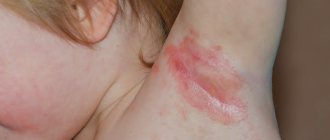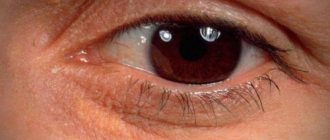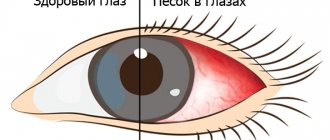The occurrence of inflammation of the lower eyelid of the eye is a rather dangerous phenomenon, which can be the result of a serious pathology. That is why every person needs to be aware of all the main reasons that contribute to the occurrence of this problem. In addition, it is important to know the main symptoms of diseases that are accompanied by inflammation of the lower eyelid. What can cause this problem, what disease does it indicate and what to do about it?
The essence and symptoms of the problem
The cause of inflammation of the lower eyelid can be blepharitis. This is an inflammatory disease that occurs on the eyelids. The problem is that this pathology can last a very long time and then recur.
There are two types of blepharitis. In the first case, this is inflammation that occurs in the tissues of the ciliary area. In the second case, it is posterior marginal blepharitis, which affects the glands located inside the eyelid. This type of blepharitis can spread to the conjunctiva or cornea.
Main symptoms:
- a feeling of burning and itching in the area of the diseased eyelid;
- swelling of the eyelid;
- when pressing on the inflamed area, an oily liquid is released;
- the skin on the affected area may peel off;
- the skin on the sore eyelid acquires a reddish tint;
- visual heaviness of the century;
- excessive tearing;
- slow eyelash growth.
Sometimes, along with the above symptoms, blepharitis may cause blurred vision, as well as pain in the eyelid area. In some cases, eyelashes may fall out and cause severe swelling. General health may deteriorate, fatigue and lethargy may occur due to the fact that pain in the eyes interferes with even the usual daily activities.
Due to swelling of the eyelids, many people have difficulty putting on and wearing contact lenses. If the disease does not respond to treatment for a long time, complications may arise, such as eye styes, conjunctivitis and chalazion.
The clinical picture of blepharitis occurs suddenly and develops very quickly, so it is impossible not to notice the development of the disease. By the way, pathology can develop against the background of other ophthalmological diseases.
Pain in the upper eyelid
When the eye hurts, the upper eyelid reacts to the disease, ceasing to fully perform its main functions - to evenly distribute the moisture secreted by the lacrimal glands and protect the eyeball.
The structure of the upper eyelid, the most active muscle of the body, dotted with capillaries, is three-layered. On the outside it is covered by a thin layer of skin, underneath there is cartilage tissue, and on the inside it is lined by the conjunctiva - the mucous membrane. It reduces friction of the moving eyeball. With pathological processes in the area of the upper eyelid there may be:
- it hurts to blink
- it hurts to press
- It hurts to close your eyes.
Photo 1. Upper eyelid hurts
Pain may accompany:
- swelling of the eyelid,
- redness,
- itching,
- photophobia,
- lacrimation,
- tissue compaction,
- swelling.
Sometimes changes in the upper eyelid are accompanied by headaches or runny nose. Most gas diseases, in which the lower or upper eyelid hurts, are easily treatable, which can only be prescribed by an ophthalmologist. Minor discomfort may arise from dust, while more serious discomfort may result from foreign bodies or injury. In other cases, pain is a symptom of the disease.
Infection
The occurrence of blepharitis is largely facilitated by various infectious diseases. Moreover, here it is worth talking not only about the entry of harmful microorganisms specifically through the eyes, but also about concomitant diseases. Treatment for inflammation of the lower eyelid may involve eliminating a fungal, viral or bacterial infection. Against this background, a weakening of the immune system may occur.
Complications
If treatment is unsatisfactory or advanced, blepharitis can be complicated by other diseases. These include:
- inflammatory lesions of the eye membranes (uveitis, keratitis, blepharoconjunctivitis, conjunctivitis);
- dry eye syndrome (xerophthalmia);
- acute and chronic varieties of meibomitis, chalazion;
- orbital abscesses;
- phlegmon of the orbital region;
- ulcerative necrotic lesions of the sclera and cornea.
One of the most dangerous complications is a decrease in the optical ability of the eye, as a result of which vision is partially or completely lost. Most often, inflammatory diseases tend to become chronic and recur over many years.
Parasitism
One of the factors provoking the occurrence of the disease is damage to demodex mites. These parasites are very common, but the result of their vital activity does not often lead to the development of blepharitis. The activation of these parasitic organisms begins, as a rule, with a weakening of the immune system, with a general weakening of the body, or with other concomitant diseases. As soon as Demodex begins to actively multiply, it enters the eyelid tissue, where it interferes with normal blood flow and clogs the sebaceous glands. In this case, you need to aim not at treating inflammation of the lower eyelid, but at eliminating the subcutaneous mite.
Causes of pain in the upper eyelid
In order for the therapy to be successful, the doctor finds out the cause of the pain in the upper eyelid. It can be caused by improperly growing eyelashes or a foreign body entering the eye, but in other cases it is caused by diseases:
- furuncle,
- abscess,
- phlegmon,
- barley,
- erysipelas,
- purulent conjunctivitis,
- a bite of an insect,
- chalazion,
- allergic reactions,
- corneal ulcer,
- traumatic eye injury,
- diseases of the frontal sinuses,
- malignant tumors of the eyelid,
- endophthalmitis and others.
Photo 2. Furuncle on the eye
Furuncle, abscess and phlegmon of the upper eyelid are acute purulent-necrotic inflammation. If it hurts under the upper eyelid when blinking, then the cause may be a boil (ulcer). In this case, surgery may be necessary. In fact, barley is also a small boil if it is caused by inflammation of the sebaceous glands. If it represents an inflamed process of the hair follicle, then it is treated conservatively.
With an abscess (purulent inflammation of tissue), which is caused by pyogenic bacteria, there are more symptoms. In addition to pain when blinking, severe swelling, drooping of the eyelid, and redness are observed. Such purulent inflammation should never be allowed to start, as it can threaten the patient’s life.
No less dangerous inflammation of the fiber is phlegmon, which does not have clear boundaries. The infection can enter the bloodstream, affect nearby tissues, or cause damage to the meninges. Cellulitis can develop simultaneously with a stye or abscess.
Erysipelas can be caused by hemolytic staphylococcus, which damages the tissue of the eyelid. Signs of such an infection are: severe pain, redness, swelling, difficulty blinking. Erysipelas can affect visual acuity.
Photo 3. Abscess of the upper eyelid
If the eye hurts under the upper eyelid and it hurts to press, then there may be inflammation of the cartilage tissue - chalazion. When it occurs, a swelling forms above the eye, and vision decreases.
As a result of pus affecting the cornea, serious consequences can occur, including a corneal ulcer. In addition to the pain in the upper eyelid, visual acuity decreases. Due to injury or disease, purulent inflammation - endophthalmitis - can occur. It is characterized by pain in the upper eyelid and purulent discharge.
If the upper eyelid swells, the cause may be squamous cell carcinoma of the skin, otherwise called squamous cell carcinoma. Malignant tumors account for about 20% of all neoplasms in the upper eyelids.
Mechanical damage
Trauma to the eye can also lead to the development of inflammation of the lower eyelid in a child and an adult. If the visual organ has really been damaged, hemorrhage may occur, for this reason the skin under the eyelashes acquires a bluish tint. Otherwise, the disease may develop as a result of a poisonous insect bite.
Treatment
To get rid of an unpleasant disease, you cannot do without the help of an ophthalmologist. First, a consultation is necessary to make a competent and accurate diagnosis. An experienced doctor must identify the nature of the pathology and determine the reasons that provoked the development of inflammation of the eye gland in the lower eyelid. The course of treatment will depend on the results of diagnostic measures.
Only a specialist can determine how to treat inflammation of the lower eyelid in an individual case. Treatment is based on drug therapy. The main objective of the course is to eliminate the causes that provoked the development of the disease and eliminate unpleasant symptoms. Depending on the nature of the pathology, special solutions and eye drops are prescribed.
If demodicosis has been detected, medications are prescribed that are designed to eliminate mites. Basically, such drugs are prescribed in the form of ointments, which are applied to the affected eyelid before going to bed at night. The components that make up such ointments have a negative effect on the vital activity of ticks, disrupting their natural life cycle. For this reason, their harmful effect on tissue is significantly reduced.
If the inflammation is allergic in nature, the task of therapy is first of all to eliminate the irritating factor - the allergen that caused the disease. If this is not possible, treatment consists of corticosteroid-type ointments, as well as antiallergic medications.
During treatment, it is especially important to adhere to good eye hygiene. For this purpose, special cosmetics are used, which are also recommended by an ophthalmologist. If you follow all hygiene recommendations, you can get rid of the disease much faster and prevent its recurrence.
Some doctors recommend following a special diet for acute forms of the disease. In this case, the diet should mostly consist of products of plant and dairy origin. It is advisable to consume meat only in boiled form. Excessively fatty and smoked foods, as well as alcoholic drinks, can aggravate the situation and intensify the inflammatory process.
If your eyelid is swollen due to injury
If the eyelid is swollen due to an allergy, then first of all you need to identify its source and exclude it. In cases where the reaction was provoked by a food product or medicine, you need to take an adsorbent, for example, activated carbon. It is also worth drinking more clean water, which will help quickly remove the allergen from the body.
If the eye hurts and is swollen due to cosmetics, you need to stop using this product, and for the period of treatment - all cosmetic products in general. If the cause of the reaction is dust or animal hair, you need to wet clean and ventilate the room. In all cases, it is important to follow hygiene rules and avoid contact with the allergen in the future.
If these measures were not enough and the eye still hurts, you need to consult an ophthalmologist. He will select remedies that will alleviate the patient’s condition. Antiallergic drugs can be in the form of drops or tablets. Vasoconstrictor drops, for example, Visine, will help relieve swelling. If the swelling rapidly progresses, there is no need to waste time; you should immediately call an ambulance.
Folk remedies
Remember that with any disease, self-medication can lead to harmful consequences. Treatment of inflammation of the lower eyelid with folk remedies can be carried out only after the approval of your doctor. And do not forget to make sure before unconventional treatment that there is no allergic reaction or hypersensitivity to individual components.
However, it is recommended to use a special ointment to treat inflammation of the lower eyelid. For example, Erythromycin. Before doing this, you need to consult a doctor!
Diagnosis of pain in the upper eyelid
When the upper eyelid is swollen and painful, it is better not to postpone a visit to the doctor. The ophthalmologist will examine:
- determine whether swelling is located on one side or both;
- assess the localization of symptoms;
- will note whether there is a bluish tint or redness;
- check whether pain is felt when pressing or blinking;
- check visual acuity;
- will feel when touched whether the affected area of the skin of the eyelid is heated.
When diagnosing, an ophthalmologist is mainly guided by the clinical picture. Tests and instrumental examinations are rarely prescribed for injuries or suspected vascular thrombosis. If there is bilateral swelling and no pain, an allergic reaction can be assumed.
When diagnosing diseases associated with the pathology of the upper eyelid, the doctor carefully examines the condition of the fold, especially in elderly patients for whom sagging of the upper eyelid is the age norm.
Photo 7. Pathology of the upper eyelid
If the eyelid tumor is shaped like a massive mushroom on a stalk or looks like a cauliflower, the doctor will stretch the skin. If the neoplasm acquires a pearly white color, then there is reason to suspect squamous cell skin cancer.
For an accurate diagnosis, it is important to find out the nature of the pain and its location. An ophthalmologist must evaluate whether pain increases with increased physical activity, eye movement, pressure, blinking, changing body position, or squeezing your eyes shut.
Oak bark
A decoction obtained from oak bark has pronounced anti-inflammatory and antibacterial properties, so it will be a very effective remedy for combating inflammation of the lower eyelid, a photo of which is in this article. To prepare the infusion, mix three tablespoons of ground oak bark with a glass of water. Heat the mixture in a water bath and keep it on the fire for about 25 minutes, then squeeze it out and add enough water to get 300 ml of the finished decoction. Rinse your eyelids frequently, but be careful not to get the liquid into your eyes.
Preventive measures against inflammation
The first thing you need to do to prevent the development of inflammatory diseases on the eyelid is to maintain the general condition of the body so that it can fight infections. A person suffers every day from harmful viruses and bacteria entering the body. In particular, this applies to the eyes, since the habit of rubbing the eyes with dirty hands provokes the development of pathogenic microflora. It is almost impossible to exclude this factor, so a healthy immune system is the key to healthy eyes and eyelids.
The main preventive measures for the inflammatory process of the lower eyelid include:
- proper and balanced nutrition, enriched with vitamin complexes; if this is not enough, it is recommended to use vitamins in tablets;
- In the morning after sleep, it is best to wash your face with cool water;
- Before you rub or scratch your eye, remember that there are a huge number of harmful bacteria on your hands, so wash your hands first, and only then can you touch your eyes;
- do not strain your eyes too much, limit your visual load, give your eyes a rest;
- Visit your ophthalmologist periodically as a preventative measure.
Remember that the eyes are a very vulnerable organ that is susceptible to inflammation and infections, which can later develop into a serious disease. All this, in turn, can threaten deterioration or even loss of vision. So, at the first symptoms of redness and pain in the eyelid area, immediately visit an ophthalmologist to understand the cause of the discomfort and receive competent recommendations for eliminating the symptoms. Do not self-medicate; only a complete diagnosis can help in making an accurate diagnosis and drawing up an effective course of treatment.
Features of pathogenesis
The pathogenesis of blepharitis consists of a number of sequential processes:
- Disturbance in the process of washing away triggers and infections from the surface of the eye, development of xerophthalmia as a result of decreased functioning of the lacrimal glands;
- Endogenous allergization of the body, possible with general somatic pathologies that contribute to changes in the cellular and chemical composition of the lacrimal gland secretion;
- Provoking factors (hypovitaminosis, dust particles, prolonged exposure to the sun) that trigger the inflammatory process.
As a result, triggers and microbial flora affect the eyelid, and a symptom complex characteristic of this disease develops.











